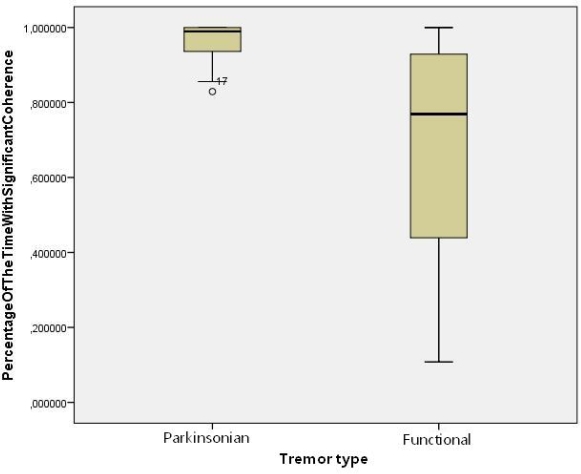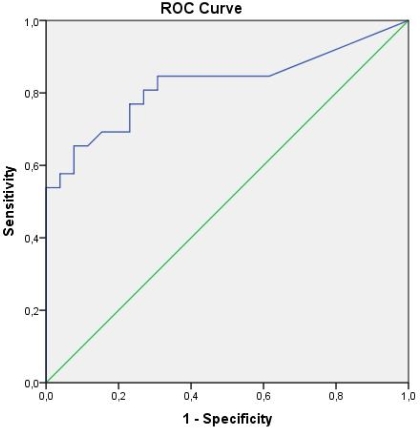Session Information
Date: Tuesday, June 21, 2016
Session Title: Tremor
Session Time: 12:30pm-2:00pm
Location: Exhibit Hall located in Hall B, Level 2
Objective: To distinguish between types of tremor using wavelet coherence analysis.
Background: To discriminate between tremor types can be challenging in clinical practice. Standard electromyographic polymyography does not always provide a definitive diagnosis. Over the last years, intermuscular coherence analysis has been suggested to play a (additional) role in discriminating between tremor types. Coherence analysis provides a measure of dependency between two EMG signals. In a previous study we showed that this analysis method was able to discriminate between Parkinsonian, essential, and enhanced physiological tremor. However, Parkinsonian and functional tremor could not be distinguished using this method. To determine whether the intermuscular coherence fluctuates over time in these two tremor groups we performed wavelet coherence analysis.
Methods: In total 52 patients were studied retrospectively: 26 with Parkinson’s and 26 with a functional tremor. Polymyographies were studied with wavelet coherence analysis. Tremor activity had to be present continuously for at least 20 seconds with the patient in the same posture. The percentage of the time with significant coherence was used in the analysis.
Results: The group with Parkinsonian tremor had significant coherence on average 96% of the time and the group with functional tremor 70% (P<0,001).  A Receiver Operating Characteristic (ROC) curve, that used percentage of the time with significant coherence to differentiate between Parkinsonian and functional tremor, showed an area under the curve of 0,82, indicating a good accuracy.
A Receiver Operating Characteristic (ROC) curve, that used percentage of the time with significant coherence to differentiate between Parkinsonian and functional tremor, showed an area under the curve of 0,82, indicating a good accuracy. 
Conclusions: Wavelet coherence analysis in addition to standard polymyography can be an useful tool to differentiate between Parkinsonian and functional tremor in most of the cases.
To cite this abstract in AMA style:
G. Kramer, M.A.J. Tijssen, N.M. Maurits, J.W. Elting. Using wavelet coherence analysis to distinguish between tremor types [abstract]. Mov Disord. 2016; 31 (suppl 2). https://www.mdsabstracts.org/abstract/using-wavelet-coherence-analysis-to-distinguish-between-tremor-types/. Accessed December 13, 2025.« Back to 2016 International Congress
MDS Abstracts - https://www.mdsabstracts.org/abstract/using-wavelet-coherence-analysis-to-distinguish-between-tremor-types/
